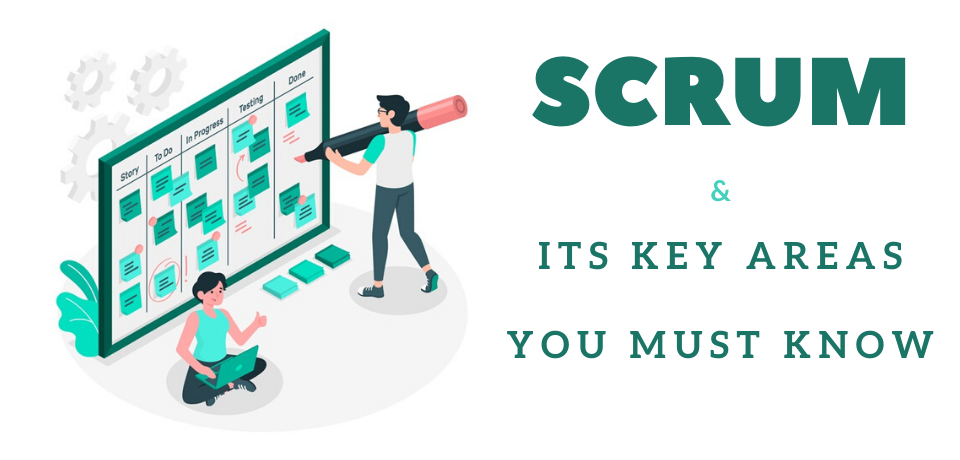Scrum is an Agile method mostly known in software management, which is also a widely applied project management framework. In this blog, we will learn why Scrum is always favored by both small development teams to very complex project-teams with its roles, documents, and kinds of meetings.
First of all, how good is Scrum compared to the traditional process model – Waterfall Model?
Waterfall typically goes through a lengthy planning process which could take several months for each stage: Planning, Building, Testing, Reviewing, and Deploying the product/project. At this point, the result may not meet the demand of the market since it has changed during the making process. More badly, if there’s any trouble at one stage, it bounces back to the first one, which causes lots of backstepping and doing over resulting in lag times and years to get a project out the door.
With Scrum, we plan on a small feature first, then build it, test it, and review it to end up with a potential one. We repeat these stages from time to time to make sure all features are linked properly together. The incremental releases we planned enough to complete are called Sprints – which only take 1-3 weeks each.
In Scrum, there are 3 KEY ROLES needed for the framework to operate:
- Product Owner: defines the features involved in the product.
- Scrum Master: the servant leader to the team, who is responsible for running the meetings and keeping the work on track.
- Team (developers, testers): team members play multiple roles to build the product.
There are 3 DOCUMENTS used commonly in Scrum:
- Product Backlog: where the product owners create a prioritized list of features (user stories) which change in each sprint. A user story follows an “As a [user], I need [something], so that [reason]” format for the team to estimate the size of the task with the right amount of detail given by the product owner.
- Sprint Backlog: is the highest priority of user stories.
- Burndown Chart: shows the progress of a sprint on the completion of tasks in the sprint backlog.
Finally, there are 3 IMPORTANT MEETINGS in Scrum:
- Sprint Planning: 3 roles meet to discuss the user stories and estimate the tasks.
- Daily Scrum: is a brief stand-up meeting where the team discusses what they have completed or anything they need help with.
- Sprint Review: the team demonstrates the completed work to the product owner and discusses what to improve it forward.
IMT-PM provides 30 PDUs Bundle to help you renew your PMI-ACP® certification at the most affordable price. Also, you have one year to complete all the courses. As soon as you complete any single course, you can claim PDUs immediately. No extra charge. No test. No exam. Certificate available. We have everything you need in one package. Register now to receive an 80% discount.
IMT-PM - Global PMI R.E.P. #4760 offers various courses for PMP®/PgMP®/PfMP®/PMI-PBA®/PMI-ACP®/PMI-RMP®/PMI-SP® Renewal.
Our best sellers are:
- 60 PDU Bundle: https://online.imt-pm.com/course/60-pdus-bundle-70
- 50 PDU Bundle: https://online.imt-pm.com/course/50-pdus-bundle-75
- 40 PDU Bundle: https://online.imt-pm.com/course/40-pdus-bundle-87
- 30 PDU to renew PMI-ACP®: https://online.imt-pm.com/course/30-pdus-to-renew-pmi-acp®-88
- 16.5 PDUs of Leadership and Strategic and Business Management Bundle: https://online.imt-pm.com/course/16-5-pdus-of-leadership-and-strategic-and-business-management-bundle-85
